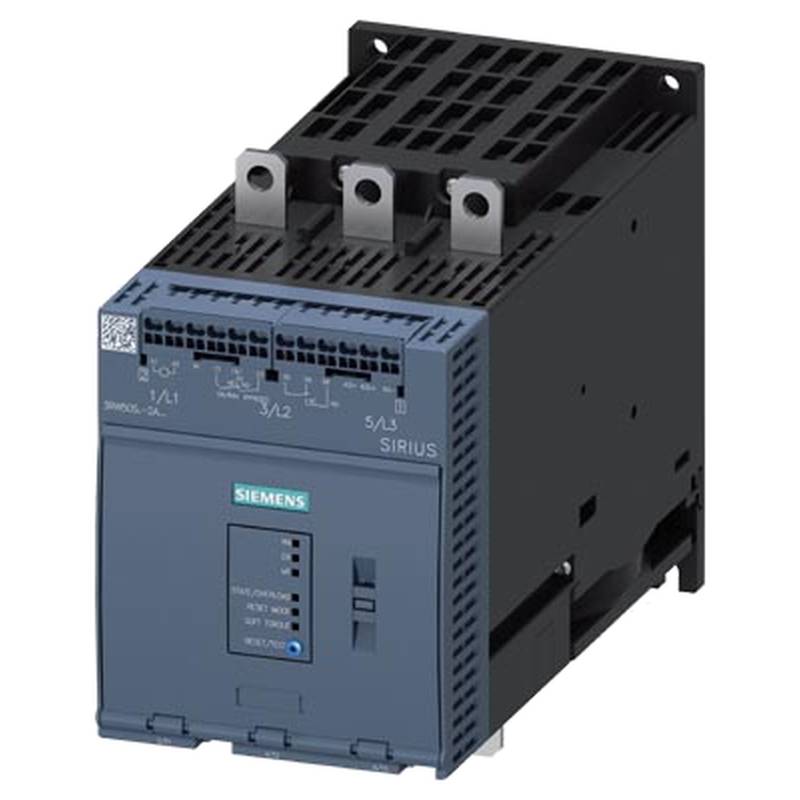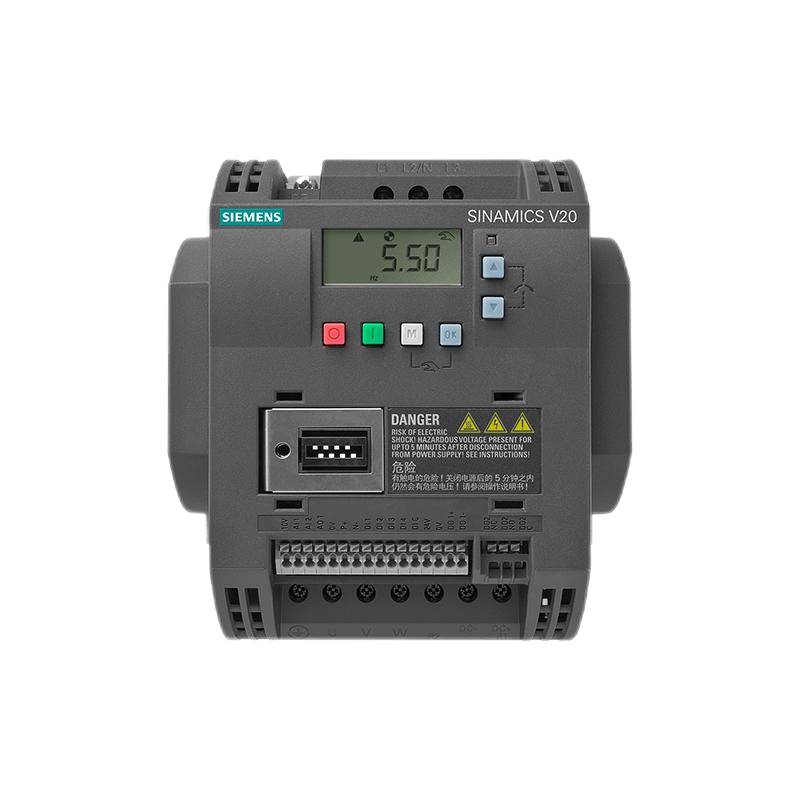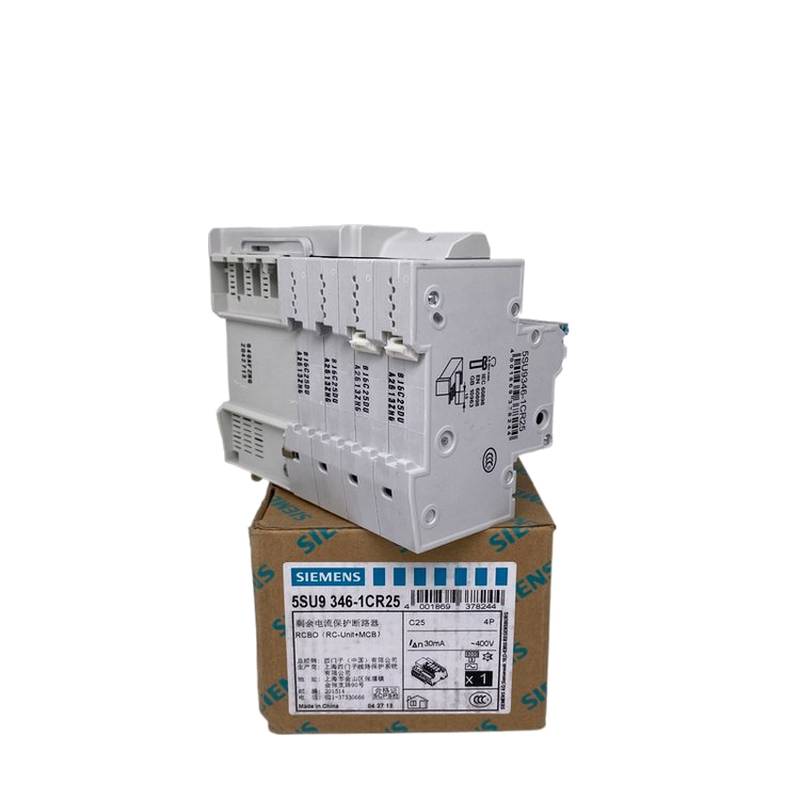
The YASKAWA HB4A0045ABC H1000 is a robust heavy-duty VFD frequency converter engineered for demanding industrial applications. This 42A, 18.5kW (25 HP) unit delivers exceptional performance, energy efficiency, and reliability. Its core advantages lie in its advanced control algorithms, comprehensive protection features, and seamless integration capabilities, making it a premier choice for variable speed drive solutions. The H1000 series excels in environments requiring precise motor control and sustained operational uptime.
Product Specifications
| Feature | Specification |
| :---------------- | :--------------------------------------------------- |
| Model | YASKAWA HB4A0045ABC H1000 |
| Rated Current | 42A |
| Rated Power | 18.5 kW (25 HP) |
| Input Voltage | 3-Phase, 400-480V AC (Specific range may vary by model suffix) |
| Output Frequency | 0 to 1200 Hz (Adjustable) |
| Control Method | Advanced Closed-Loop Vector Control, Open-Loop V/f |
| Protection Class | IP20 (Standard), optional IP54 |
| Ambient Temperature | -10°C to +50°C (Derating may apply) |
| Mounting | Wall/Panel Mount |
Core Features & Market Positioning
The YASKAWA HB4A0045ABC H1000 distinguishes itself with its sophisticated closed-loop vector control, enabling precise torque and speed regulation even under fluctuating loads. This advanced control technology ensures superior dynamic response and positioning accuracy, critical for applications like machine tools, elevators, and cranes. Furthermore, its robust design, featuring high-grade components and comprehensive thermal management, positions it as a reliable workhorse in harsh industrial settings. The H1000 series is recognized for its energy-saving capabilities, actively reducing power consumption without compromising performance. Its user-friendly interface and extensive parameter settings facilitate straightforward setup and optimization for diverse motor types and operational requirements. Yaskawa's established reputation for quality and durability further solidifies the H1000's market leadership in the heavy-duty VFD segment.
Key Application Scenarios
This heavy-duty VFD is ideally suited for a wide array of industrial applications demanding consistent performance and precise control. It is extensively utilized in material handling systems, such as conveyors and automated guided vehicles (AGVs), where smooth acceleration and deceleration are paramount. In the manufacturing sector, the HB4A0045ABC H1000 finds application in the precise control of pumps, fans, and compressors, contributing to significant energy savings and extended equipment life. It is also a strong candidate for process industries, including water treatment and HVAC systems, where reliable operation and adaptability to varying demands are essential. Furthermore, its robust construction makes it suitable for environments with dust and moisture, provided appropriate enclosure options are selected.
Practical System Integration Guidance
Integrating the YASKAWA HB4A0045ABC H1000 into existing systems is streamlined through its versatile communication options and clear wiring protocols. For optimal performance, ensure the input power supply is within the specified voltage and frequency range and correctly phased. Motor wiring should adhere to the VFD manufacturer's recommendations, using shielded cables where necessary to mitigate electromagnetic interference (EMI). Commissioning typically involves setting fundamental parameters such as motor nameplate data (pole count, rated voltage, frequency, current) and selecting the appropriate control mode (e.g., open-loop V/f or closed-loop vector). Advanced configuration may include defining acceleration/deceleration times, setting speed references, and configuring digital and analog I/O for external control signals. Referencing the Yaskawa H1000 User Manual is crucial for detailed programming and specific application tuning.
Operation and Risk Mitigation
Safe operation of the YASKAWA HB4A0045ABC H1000 necessitates adherence to electrical safety standards and proper installation practices. Ensure the VFD is properly grounded and that all power and motor connections are secure before energizing the unit. Avoid operating the VFD outside its specified environmental conditions. Key fault codes, such as "Overcurrent" (often code 1), "Overtemperature" (code 2), or "Output Phase Loss" (code 6), indicate immediate operational issues that require investigation. Troubleshooting typically involves checking connections, verifying motor parameters, and ensuring adequate ventilation. Regular inspection of wiring and the cooling fan can prevent potential failures and ensure sustained operational integrity. Always disconnect power before performing any maintenance or inspection.
Scalability & Long-Term Value
The YASKAWA HB4A0045ABC H1000 offers significant long-term value through its inherent scalability and compatibility with modern industrial automation frameworks. Its modular design allows for the integration of optional communication network cards, enabling seamless connectivity with platforms like EtherNet/IP, PROFINET, or DeviceNet, facilitating integration into IIoT environments. This adaptability ensures that the VFD can be part of a larger, interconnected smart factory ecosystem. Furthermore, Yaskawa's commitment to firmware updates provides pathways for performance enhancements and the introduction of new features over the product's lifecycle, safeguarding the investment. Its robust build quality and Yaskawa's global support network contribute to its longevity and dependable performance, minimizing total cost of ownership.
Frequently Asked Questions
What is the maximum input voltage for the YASKAWA HB4A0045ABC H1000?
The YASKAWA HB4A0045ABC H1000 typically operates with a 3-phase input voltage range of 400-480V AC. This standard range is suitable for most industrial power grids. Always confirm the specific voltage rating on the product label or documentation.
Always ensure your power source matches the VFD's specified input voltage. Incorrect voltage can lead to immediate damage or improper operation. Consult the manual for precise tolerances.
Proper phase sequence is also critical for correct VFD operation. Incorrect phasing can trigger protection faults or damage connected equipment.
How do I connect a motor to the YASKAWA HB4A0045ABC H1000?
Connect the motor's power leads (typically U, V, W) to the corresponding output terminals on the VFD. Use appropriately sized and shielded cables to minimize electrical noise. Ensure all connections are secure.
For closed-loop vector control, you will also need to connect the motor's encoder feedback cable to the dedicated encoder input terminals on the VFD. This allows for precise speed and position control.
Always verify the motor's insulation resistance and phase-to-phase resistance before connecting it to the VFD. This helps prevent damage to the VFD in case of motor faults.
What are common error codes for the H1000 VFD?
Common error codes include "E.OC" (Overcurrent), "E.OH" (Over-temperature), and "E.PE" (Parameter Error). Each code indicates a specific fault condition that needs addressing. Consult the manual for a full list.
"E.OC" often means the motor is drawing too much current, possibly due to overload or incorrect acceleration settings. Check the motor load and VFD acceleration ramp.
"E.OH" signifies the VFD's internal heatsink temperature is too high. Ensure proper ventilation and that the cooling fan is functioning correctly.
Can the YASKAWA HB4A0045ABC H1000 be used with single-phase motors?
No, the YASKAWA HB4A0045ABC H1000 is designed for 3-phase motors only. It converts incoming 3-phase power to variable frequency 3-phase output.
Using a single-phase motor with a 3-phase VFD will result in improper operation and potential damage. Single-phase motors require different starting mechanisms.
If you need to control a single-phase motor with variable speed, you would typically require a specialized single-phase input/output drive, which is different from this model.
What is the difference between open-loop and closed-loop control on this VFD?
Open-loop control (V/f) provides basic speed control without motor feedback. It's simpler and suitable for many fan and pump applications.
Closed-loop vector control uses motor feedback (e.g., from an encoder) for precise torque and speed regulation. This is essential for demanding applications like positioning.
Closed-loop control offers superior dynamic performance, higher accuracy, and better holding torque compared to open-loop control.
How do I set up the YASKAWA HB4A0045ABC H1000 for energy saving?
Enable the VFD's built-in energy-saving function, often found in advanced parameter settings. This feature optimizes the output voltage to reduce motor losses.
Ensure the motor is operating at an optimal speed for the load. Avoid running motors faster than necessary, as this significantly increases power consumption.
Properly size the VFD for the motor and application. An oversized VFD can operate inefficiently at lower loads. Regular maintenance also contributes to efficiency.
What is the maximum output frequency of the YASKAWA HB4A0045ABC H1000?
The YASKAWA HB4A0045ABC H1000 is capable of outputting frequencies up to 1200 Hz. This wide frequency range allows for high-speed motor operation.
This high frequency capability is crucial for specialized machinery that requires very rapid motor speeds, such as certain types of machine tools or textile machinery.
Ensure the motor itself is rated for such high speeds and that the VFD's output is appropriately filtered if operating at very high frequencies to protect the motor.
Can I control the H1000 VFD remotely?
Yes, remote control is possible using digital inputs, analog inputs, or through optional communication network cards. These allow integration with PLCs or HMIs.
Digital inputs can be used for start/stop commands or speed selection. Analog inputs typically control speed via a 0-10V or 4-20mA signal.
Optional network modules enable full parameter access and control over industrial Ethernet protocols like EtherNet/IP or PROFINET.
What maintenance is required for the YASKAWA HB4A0045ABC H1000?
Regularly check for dust accumulation on heatsinks and fans, cleaning as needed to maintain optimal cooling. Inspect all electrical connections for tightness.
Periodically verify that the cooling fan is operational and not making unusual noises. Listen for any abnormal motor or VFD sounds during operation.
While the H1000 is robust, avoid operating in extremely harsh environments unless using an appropriate enclosure. Firmware updates may also be beneficial.
How does the H1000 handle motor overload?
The VFD has built-in electronic overload protection (EOL) that monitors motor current. It will trip and display an overcurrent fault if the motor exceeds its set current limit for too long.
The overload trip level and time delay are adjustable via parameters to match the specific motor's characteristics and the application's load profile.
This protection prevents motor winding damage. It's crucial to set these parameters correctly during commissioning based on the motor nameplate and load requirements.

























